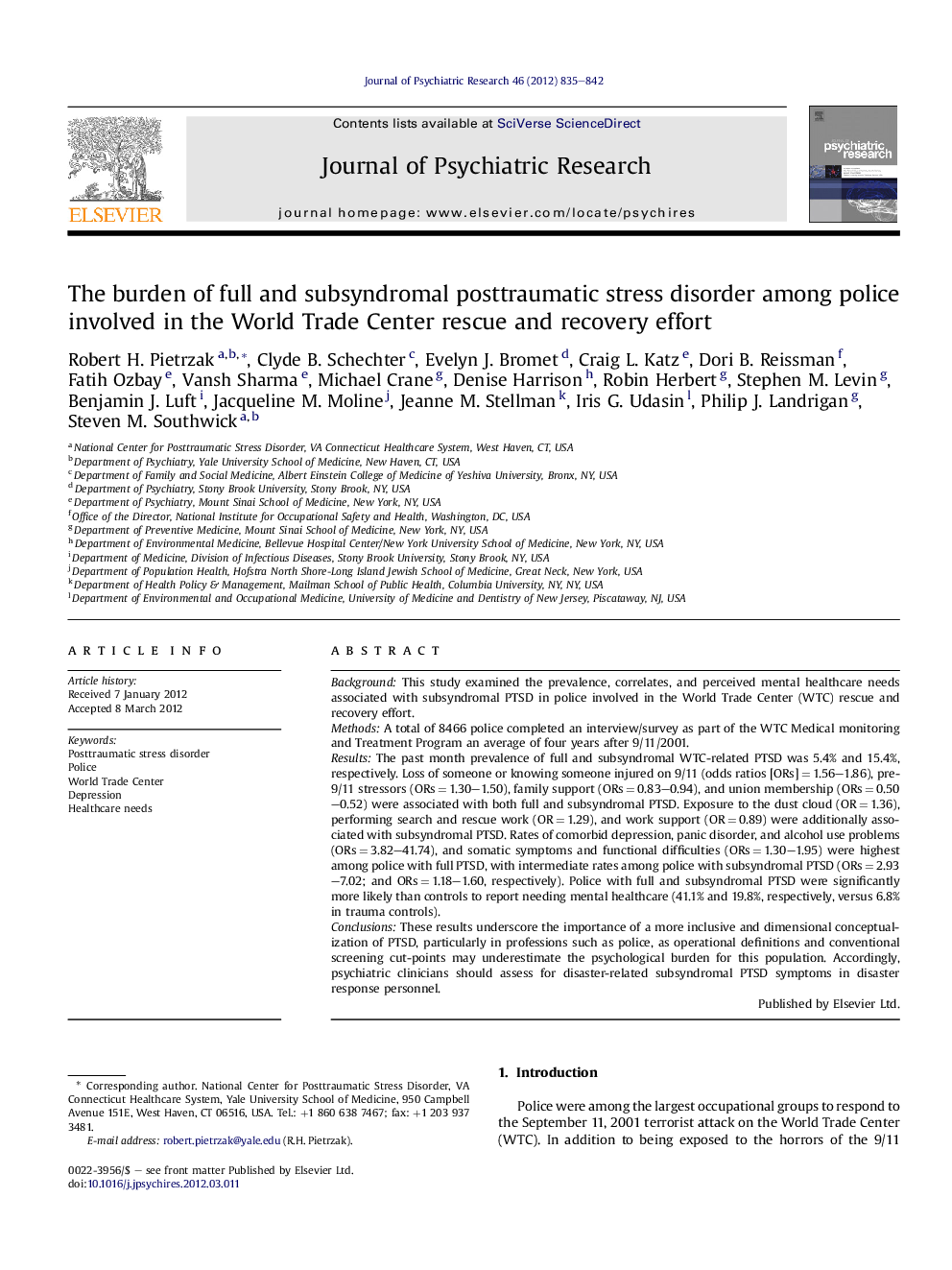| Article ID | Journal | Published Year | Pages | File Type |
|---|---|---|---|---|
| 326531 | Journal of Psychiatric Research | 2012 | 8 Pages |
BackgroundThis study examined the prevalence, correlates, and perceived mental healthcare needs associated with subsyndromal PTSD in police involved in the World Trade Center (WTC) rescue and recovery effort.MethodsA total of 8466 police completed an interview/survey as part of the WTC Medical monitoring and Treatment Program an average of four years after 9/11/2001.ResultsThe past month prevalence of full and subsyndromal WTC-related PTSD was 5.4% and 15.4%, respectively. Loss of someone or knowing someone injured on 9/11 (odds ratios [ORs] = 1.56–1.86), pre-9/11 stressors (ORs = 1.30–1.50), family support (ORs = 0.83–0.94), and union membership (ORs = 0.50–0.52) were associated with both full and subsyndromal PTSD. Exposure to the dust cloud (OR = 1.36), performing search and rescue work (OR = 1.29), and work support (OR = 0.89) were additionally associated with subsyndromal PTSD. Rates of comorbid depression, panic disorder, and alcohol use problems (ORs = 3.82–41.74), and somatic symptoms and functional difficulties (ORs = 1.30–1.95) were highest among police with full PTSD, with intermediate rates among police with subsyndromal PTSD (ORs = 2.93–7.02; and ORs = 1.18–1.60, respectively). Police with full and subsyndromal PTSD were significantly more likely than controls to report needing mental healthcare (41.1% and 19.8%, respectively, versus 6.8% in trauma controls).ConclusionsThese results underscore the importance of a more inclusive and dimensional conceptualization of PTSD, particularly in professions such as police, as operational definitions and conventional screening cut-points may underestimate the psychological burden for this population. Accordingly, psychiatric clinicians should assess for disaster-related subsyndromal PTSD symptoms in disaster response personnel.
